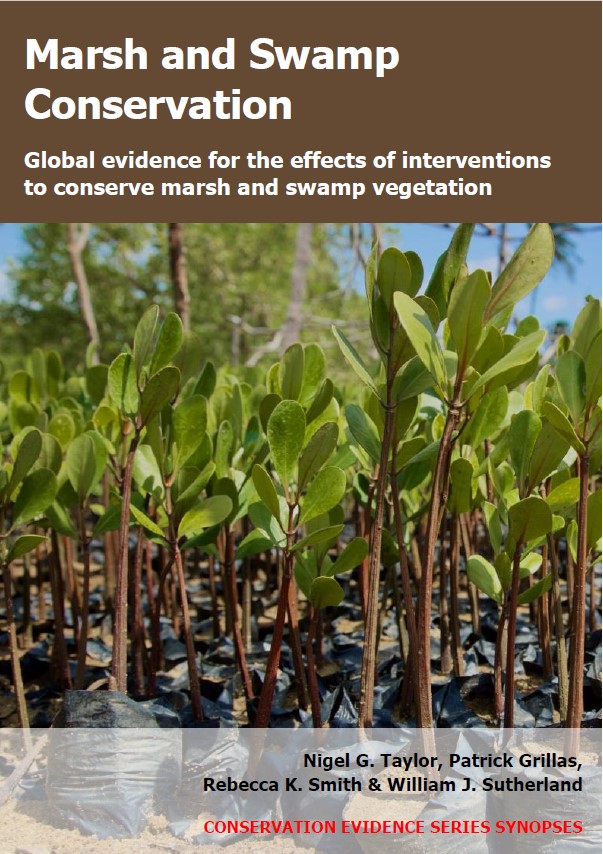Background information and definitions
Important wild vertebrates in marshes include mammals (e.g. deer, rabbits, hares, kangaroos, feral horses, feral pigs), birds (e.g. ducks, geese, swans), reptiles (e.g. turtles) and fish (e.g. carp). These animals can damage vegetation directly by eating it. They can also affect vegetation indirectly, for example by trampling, creating trails, digging, burrowing or defecation (Fuller 1985). Reducing the local population of wild vertebrates (e.g. by scaring them away and/or killing them) could reduce their impacts and allow degraded sites to recover. It may be very difficult to completely eradicate animals that have refuges in nearby habitats.
To be summarized as evidence for this action, studies must have successfully reduced the local population density of problematic vertebrates. This could be done, for example, by killing them or by scaring them away.
Caution: These actions could directly affect non-target animals (e.g. if they consume poison by mistake) or might have knock-on effects for the rest of the food chain (e.g. less food for predators of the controlled animals; accumulation of poisons in predators; increased population of one problematic species after another, competing species is controlled; Corbett 1995). Herbivorous vertebrates, in particular, can be important in maintaining wetland vegetation, by controlling dominant species (e.g. black swans Cygnus atratus controlling sedges and maintaining open water; Smith et al. 2012) or by creating habitats on a large scale (e.g. marshes that develop on abandoned beaver Castor canadensis ponds; Wright et al. 2002). You should consider whether killing vertebrates is ethically acceptable. Scaring vertebrates away from a focal site could shift the problem to adjacent sites.
Related actions: actions to address the threat from domestic livestock, e.g. Use barriers to keep livestock off ungrazed marshes; Exclude wild vertebrates using physical barriers; Control populations of wild invertebrates.
Corbett L. (1995) Does dingo predation or buffalo competition regulate feral pig populations in the Australian wet-dry tropics? An experimental study. Wildlife Research, 22, 65–74.
Fuller D.A., Sasser C.E., Johnson W.B. & Gosselink J.G. (1985) The effects of herbivory on vegetation on islands in Atchafalaya Bay, Louisiana. Wetlands, 4, 105–114.
Smith A.N., Vernes K.A. & Ford H.A. (2012) Grazing effects of black swans Cygnus atratus (Latham) on a seasonally flooded coastal wetland of eastern Australia. Hydrobiologia, 697, 45–57.
Wright J.P., Jones C.G. & Flecker A.S. (2002) An ecosystem engineer, the beaver, increases species richness at the landscape scale. Oecologia, 132, 96–101.






)_2023.JPG)














